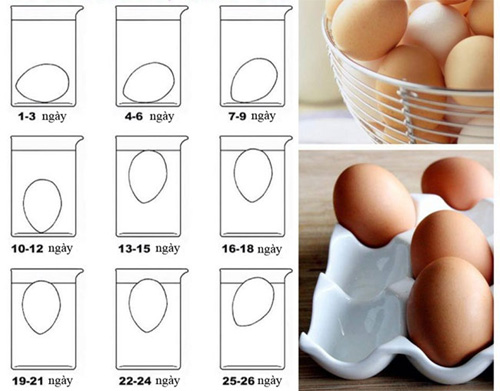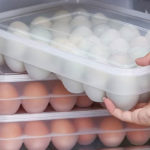Egg Shake
When buying eggs, women should hold each one to check. Hold the egg firmly in your hand with your thumb and forefinger (not too tight) and shake gently. If you don’t hear a sound, it’s a fresh egg. But if you hear a faint sound and pay attention, it’s an egg that has been stored for a while. If you hear a clear sound, it’s a spoiled, rotten egg.
Look at the eggshell
In addition to shaking the eggs, women can also observe the eggshell to determine if it’s fresh or old.
You should choose eggs with thick shells and an appropriate size. They will be fresher and more delicious than eggs with thin shells.
Avoid choosing eggs with smooth and shiny shells, as they may have cracks and are often stored for a long time before being sold. Eggs with slightly rough and hard shells, with a thin layer of powder around them, are fresh and worth buying.
Test the egg with salt water

This is a method to accurately determine the freshness of the egg.
The implementation is extremely simple. You just need to prepare a cup of diluted salt water (about 10%) (you can use a bowl if you want to try multiple eggs). Place the egg in the salt water.
Observing the position of the egg in the cup will help you determine which eggs are of good quality. Fresh eggs will sink to the bottom or lie horizontally. Old eggs will float in the middle of the water. Rotten eggs will float to the surface completely.
Candle test
This is a more complex method that requires experience and time. First, hold the egg in your hand, exposing both ends of the egg. Or you can roll the egg in the pages of a book/newspaper. Look at one end of the egg, leaving the other end in front of a light bulb or under sunlight.
– If you see a translucent pink with a small pink spot in the middle, it’s a fresh egg. The air sac will be small and immobile.
– If you see a large air sac and visible veins, it’s an old egg. The bigger the air sac, the older the egg.
– If you see a broken yolk with uneven colors, possibly grayish, it’s a rotten egg.
According to Khoevadep







































